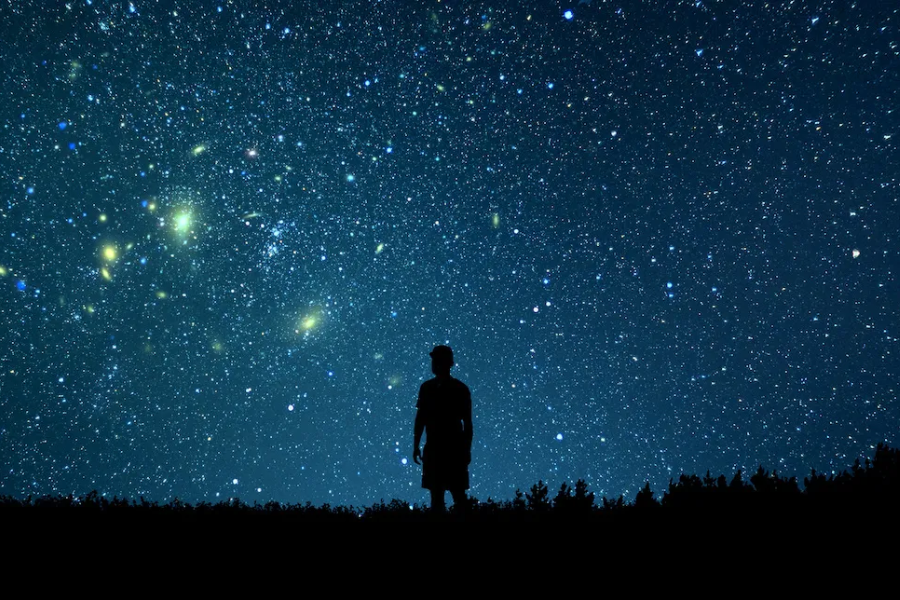Stars-923: A Beacon of Beauty and Scientific Insight in the Cosmos
Welcome to the enchanting realm of Stars-923, a celestial wonder that has captivated astronomers and stargazers for generations. Located in the vast cosmos, this star not only showcases breathtaking beauty but also harbors a treasure trove of scientific insights waiting to be uncovered. From its distinctive features to stunning images captured by cutting-edge telescopes and satellites, there’s much more than meets the eye. Join us as we embark on an exciting journey through the history, formation, unique characteristics, and groundbreaking discoveries surrounding Stars-923. Prepare to be amazed!
History of Stars-923 and Its Discoveries
Stars-923 boasts a rich and storied history that continues to fascinate both astronomers and space enthusiasts. First documented in the early 20th century, its brilliance immediately caught the attention of researchers eager to explore the mysteries of the cosmos. Initial observations noted its striking luminosity, prompting further investigation into its properties and significance.
As decades passed, advancements in telescope technology revolutionized our understanding of this remarkable star. The advent of spectroscopy—an analytical technique that studies the interaction of light with matter—opened new avenues for deciphering its composition and behavior. This technique allowed astronomers to identify specific elements present in Stars-923, leading to a deeper understanding of its formation and lifecycle.
Significant discoveries have emerged from key astronomical missions aimed at studying Stars-923. Telescopes equipped with high-resolution cameras have captured detailed images that reveal its unique attributes. These observations have provided crucial insights into the star’s brightness, color, and surrounding cosmic environment, enriching our knowledge of the universe.
In recent years, collaborative efforts among global observatories have resulted in groundbreaking findings. By pooling resources and expertise, researchers have unraveled critical information about Stars-923’s age, temperature, and potential planetary systems orbiting this stellar giant. The ongoing exploration of Stars-923 continues to inspire curiosity and drive scientific inquiry, with each new discovery adding another layer to our understanding of this captivating celestial body.
The Formation and Life Cycle of Stars-923
Stars-923, like all stars, has a fascinating origin story that begins in a nebula—a vast cloud of gas and dust in space. Under the influence of gravity, this material begins to condense, forming a dense core. Over time, as more gas and dust accumulate, the core heats up due to increasing pressure.
Once the core reaches a critical temperature, nuclear fusion ignites, marking the birth of Stars-923. During this main sequence phase, hydrogen atoms fuse to create helium, releasing an immense amount of energy that illuminates the star and sustains its brilliance for billions of years. This phase constitutes the longest part of a star’s life and is characterized by stability and consistent energy output.
As Stars-923 exhausts the hydrogen in its core, it undergoes a dramatic transformation. The star swells into a red giant, expanding significantly while shedding its outer layers into space. This stage of its life cycle is marked by fascinating phenomena, including changes in brightness and color as the star’s temperature fluctuates.
The final chapters of Stars-923’s life are equally spectacular. Depending on its mass, the star may ultimately end as a white dwarf, leaving behind a dense core, or it may explode in a supernova, scattering its materials across the cosmos. Each step in this evolutionary journey reveals more about the intricate tapestry of the universe and highlights the significant role stellar life plays in cosmic evolution.
Unique Characteristics and Features of Stars-923
What sets Stars-923 apart from its stellar counterparts are its extraordinary characteristics. One of the most notable features is its remarkable luminosity. Stars-923 emits a brilliant light that can be observed from vast distances, making it a prominent beacon in the night sky. This luminosity not only captivates the eyes of stargazers but also serves as a vital tool for astronomers seeking to study the star’s properties.
Another intriguing aspect of Stars-923 is its unique spectral classification. The star’s composition reveals an exceptional mix of elements, offering valuable insights into the nucleosynthesis processes occurring within it. Spectroscopic studies have identified the presence of various heavy elements, suggesting a complex history of fusion and chemical evolution.
The temperature gradient across Stars-923’s surface further enhances its allure. Different zones exhibit distinct thermal characteristics, prompting scientists to investigate how these variations impact the star’s overall behavior and longevity. Such temperature fluctuations can influence the star’s brightness and stability, contributing to the dynamic nature of Stars-923.
Additionally, Stars-923 displays unusual variability in brightness. These fluctuations may provide clues about gravitational interactions with surrounding celestial bodies or potential eclipsing features within its system. Such variability can offer insights into the physical processes governing the star’s evolution and the interactions occurring within its immediate environment.
Researchers remain dedicated to exploring these remarkable traits, as they hold the potential to unlock deeper cosmic mysteries tied to Stars-923. Understanding these characteristics not only enhances our comprehension of this particular star but also enriches our broader understanding of stellar evolution and the universe’s intricate workings.
Images Captured by Telescopes and Satellites
The captivating beauty of Stars-923 has been immortalized through the lenses of various telescopes and satellites. Each image tells a unique story, revealing intricate details that enhance our understanding of this remarkable star.
Telescopes such as the Hubble Space Telescope have captured stunning visuals that showcase the luminous glow of Stars-923 against the backdrop of space. These breathtaking images offer awe-inspiring views, highlighting the star’s brilliance and the surrounding celestial features, such as nebulae and star clusters. The clarity of these images allows astronomers to analyze the star’s physical characteristics with unprecedented detail.
Satellites equipped with advanced imaging technology contribute even further to our understanding. They can detect light signatures that are invisible to the naked eye, unveiling new dimensions in the composition of Stars-923. These observations may reveal elements and compounds present in the star’s atmosphere, enriching our knowledge of its formation and lifecycle.
The breathtaking photographs not only evoke wonder but also serve as invaluable tools for astronomers. By meticulously analyzing these images, researchers can uncover vital information about Stars-923’s structure, its interactions with surrounding celestial bodies, and its behavior within the broader galaxy. Each snapshot taken contributes to the quest for knowledge, weaving together a more comprehensive narrative of our cosmic neighborhood.
Recent Discoveries and Studies on Stars-923
In recent years, studies focusing on Stars-923 have unveiled exciting new insights that challenge previous understandings. Researchers have detected unusual spectral lines within its atmosphere, suggesting the presence of rare elements that have not been extensively observed in similar stars. These findings prompt further investigation into the star’s composition and the processes shaping its evolution.
A recent analysis conducted by a team from the Galactic Observatory revealed unexpected temperature fluctuations in Stars-923. These changes indicate dynamic atmospheric conditions that were not previously observed in comparable stellar bodies. Understanding these temperature variations may shed light on the complex processes governing the star’s lifecycle and stability.
Another captivating discovery involves the potential for exoplanets orbiting Stars-923. The ongoing search for planets has sparked renewed interest among astronomers eager to explore possibilities for life beyond our solar system. The presence of exoplanets could significantly enhance our understanding of planetary formation and the conditions necessary for life to thrive.
As experts continue their investigations, advanced imaging techniques are providing clearer views than ever before. This enhanced perspective paves the way for groundbreaking theories about stellar evolution and behavior. Each new finding adds another layer of complexity to our knowledge of Stars-923, igniting curiosity across the scientific community and beyond.
What the Future Holds for Studying Stars-923
The future of studying Stars-923 is brimming with potential. Ongoing advancements in telescope technology promise to offer even deeper insights into its composition and behavior. New telescopes equipped with high-resolution imaging capabilities and advanced spectroscopic instruments are set to revolutionize our understanding of this celestial marvel.
Researchers are eager to unravel the mysteries hidden within Stars-923. Upcoming missions aim to gather more data, enhancing our comprehension of its life cycle and evolution. The quest for knowledge surrounding this star is likely to yield exciting discoveries, particularly regarding its atmospheric composition and potential planetary systems.
In particular, new spectroscopic techniques could unveil critical clues about the star’s atmosphere, including its chemical makeup and the presence of volatile elements. These revelations may lead to significant breakthroughs regarding the possibility of exoplanets and their potential for harboring life.
Moreover, collaborations across global observatories are expected to yield a wealth of shared knowledge. This collective effort, pooling resources and expertise, might accelerate breakthroughs that were previously unattainable. As astronomers join forces, they enhance our understanding of Stars-923 and its context within the cosmos.
As we venture further into space exploration, Stars-923 remains a focal point for astronomers worldwide. Each observation brings us closer to grasping not only this star’s secrets but also the broader cosmic mysteries surrounding it.
Conclusion: Why Stars-923 is a Fascinating and Important Star to Study
Stars-923 stands out in the vast universe, capturing the attention of astronomers and enthusiasts alike. Its unique characteristics and fascinating history provide a window into stellar evolution and cosmic phenomena. Each discovery related to Stars-923 enriches our understanding of how stars form, evolve, and ultimately perish.
The stunning images captured by advanced telescopes offer breathtaking views that inspire awe. They serve not only as beautiful representations of the cosmos but also as vital clues to unraveling the mysteries of our universe. Recent studies continue to shed light on this remarkable star, revealing insights that could redefine our knowledge of celestial bodies.
As technology continues to advance, our ability to study Stars-923 will only improve. Future missions are likely to yield even more extraordinary findings about this intriguing star. The importance of studying Stars-923 cannot be overstated; it serves as a crucial piece in the puzzle of our cosmos.
Engaging with such wonders encourages curiosity and deepens our appreciation for the night sky above us. Exploring Stars-923 is more than a scientific endeavor; it’s an invitation to marvel at the beauty and complexity surrounding us in the universe. So, let’s keep looking up and continue our journey through the cosmos, uncovering the mysteries of Stars-923 and beyond.
Facts:
- Location: Stars-923 is located in the vast cosmos, making it a prominent object of study for astronomers.
- Discovery: First documented in the early 20th century, Stars-923 has been a focus of ongoing astronomical research.
- Formation: The star formed in a nebula, with nuclear fusion igniting its core and sustaining it for billions of years.
- Life Cycle: Stars-923 transitions from a main sequence star to a red giant, potentially ending as a white dwarf or in a supernova.
- Luminosity: Stars-923 is known for its remarkable brightness, visible from vast distances.
- Spectral Classification: The star displays a unique mix of elements, providing insights into nucleosynthesis processes.
- Temperature Variations: Different zones on Stars-923 show distinct thermal characteristics, influencing its brightness and stability.
- Brightness Fluctuations: Unusual variability in brightness may hint at gravitational interactions or eclipsing features.
- Recent Discoveries: Studies have detected rare elements in its atmosphere and suggested the presence of exoplanets.
- Future Research: Ongoing advancements in telescope technology and global collaborations promise to enhance understanding of Stars-923.
Summary:
Stars-923 is a captivating celestial body that not only dazzles with its luminosity but also serves as a rich source of scientific insights. Discovered in the early 20th century, Stars-923 has since undergone extensive observation, revealing its complex history, formation, unique characteristics, and groundbreaking discoveries.
The star was born in a nebula, undergoing nuclear fusion that sustained it for billions of years. As it ages, it transforms from a main sequence star to a red giant and may ultimately end as a white dwarf or explode in a supernova. Key features of Stars-923 include its extraordinary brightness, unique spectral classification, temperature variations, and unusual brightness fluctuations.
The beauty of Stars-923 has been captured in stunning images from advanced telescopes like the Hubble Space Telescope, providing insights into its structure and surrounding cosmic environment. Recent studies have revealed potential exoplanets and unexpected temperature fluctuations, indicating dynamic atmospheric conditions. The future of research on Stars-923 looks promising with advancements in technology and global collaborations set to enhance our understanding of this fascinating star.
FAQs:
- What is Stars-923?
Stars-923 is a celestial star that has fascinated astronomers due to its brightness, unique characteristics, and potential for revealing insights into stellar evolution. - How was Stars-923 discovered?
Stars-923 was first documented in the early 20th century, with its luminosity attracting attention from researchers eager to explore the cosmos. - What are the key features of Stars-923?
Key features include its extraordinary luminosity, unique spectral classification, temperature variations, and unusual brightness fluctuations. - How does Stars-923 form and evolve?
Stars-923 forms in a nebula, undergoes nuclear fusion, evolves into a red giant, and may end as a white dwarf or explode in a supernova. - What technologies are used to study Stars-923?
Advanced telescopes like the Hubble Space Telescope and spectroscopic instruments are utilized to capture images and analyze the star’s properties. - Are there exoplanets associated with Stars-923?
Recent studies suggest the potential presence of exoplanets orbiting Stars-923, prompting further investigation into planetary formation and conditions for life. - What is the future of research on Stars-923?
Future research will benefit from advancements in telescope technology and global collaborations, leading to deeper insights into the star’s composition and behavior.






